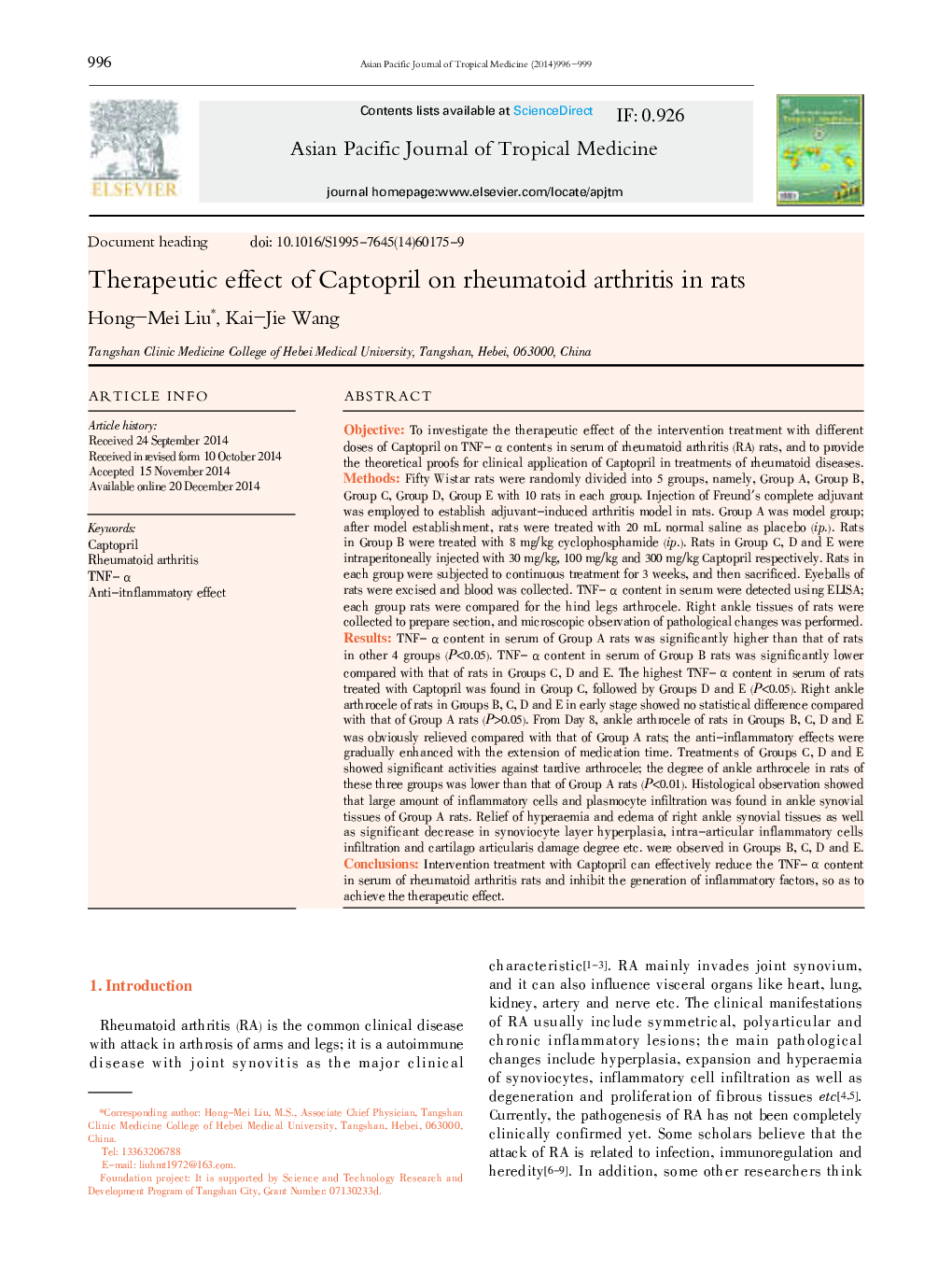| Article ID | Journal | Published Year | Pages | File Type |
|---|---|---|---|---|
| 3455726 | Asian Pacific Journal of Tropical Medicine | 2014 | 4 Pages |
ObjectiveTo investigate the therapeutic effect of the intervention treatment with different doses of Captopril on TNF-αcontents in serum of rheumatoid arthritis (RA) rats, and to provide the theoretical proofs for clinical application of Captopril in treatments of rheumatoid diseases.MethodsFifty Wistar rats were randomly divided into 5 groups, namely, Group A, Group B, Group C, Group D, Group E with 10 rats in each group. Injection of Freund's complete adjuvant was employed to establish adjuvant-induced arthritis model in rats. Group A was model group; after model establishment, rats were treated with 20 mL normal saline as placebo (ip.). Rats in Group B were treated with 8 mg/kg cyclophosphamide (ip.). Rats in Group C, D and E were intraperitoneally injected with 30 mg/kg, 100 mg/kg and 300 mg/kg Captopril respectively. Rats in each group were subjected to continuous treatment for 3 weeks, and then sacrificed. Eyeballs of rats were excised and blood was collected. TNF-αcontent in serum were detected using ELISA; each group rats were compared for the hind legs arthrocele. Right ankle tissues of rats were collected to prepare section, and microscopic observation of pathological changes was performed.ResultsTNF-αcontent in serum of Group A rats was significantly higher than that of rats in other 4 groups (P<0.05). TNF-αcontent in serum of Group B rats was significantly lower compared with that of rats in Groups C, D and E. The highest TNF-αcontent in serum of rats treated with Captopril was found in Group C, followed by Groups D and E (P<0.05). Right ankle arthrocele of rats in Groups B, C, D and E in early stage showed no statistical difference compared with that of Group A rats (P>0.05). From Day 8, ankle arthrocele of rats in Groups B, C, D and E was obviously relieved compared with that of Group A rats; the anti-inflammatory effects were gradually enhanced with the extension of medication time. Treatments of Groups C, D and E showed significant activities against tardive arthrocele; the degree of ankle arthrocele in rats of these three groups was lower than that of Group A rats (P<0.01). Histological observation showed that large amount of inflammatory cells and plasmocyte infiltration was found in ankle synovial tissues of Group A rats. Relief of hyperaemia and edema of right ankle synovial tissues as well as significant decrease in synoviocyte layer hyperplasia, intra-articular inflammatory cells infiltration and cartilago articularis damage degree etc. were observed in Groups B, C, D and E.ConclusionsIntervention treatment with Captopril can effectively reduce the TNF-αcontent in serum of rheumatoid arthritis rats and inhibit the generation of inflammatory factors, so as to achieve the therapeutic effect.
